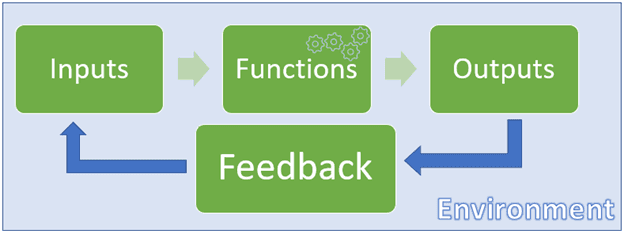Building the Blueprint: Crafting a Solid System for Business Growth
Jul 4, 2023

Getting your new venture up and running is a rush. It’s all about creativity, learning, adapting… It’s the honeymoon phase of entrepreneurship. Honestly, it’s my favorite part. But there comes a time where you need to make it predictable. Boring probably isn’t the right word (unless you’re an agent of chaos). But we’ll call it boring. If you want consistent results, you are going to have to build a system that is entirely predictable. This can be tough for new business owners. It was for me.
WTF is a System?
A system is how you perform a task. When you get in the shower, you probably do the same thing every time. Wash you hair, then your face, then body… Whatever your program looks like I doubt you go balls face, hair one day then face, feet balls the next. Our entire lives are built around systems. Getting ready in the morning, filling a glass of water, and so on.
Your business needs systems to run smoothly. If you own a business and you find yourself running from one fire to the next, you have shit systems. So, let’s look at what makes a system complete.
Inputs are the ingredients used to make whatever it is that you’re making. Let’s use marketing for this example. For marketing your inputs include things like target market, message, messaging channels, frequency, duration, campaign strategy, and so on. This will vary from one business to the other, so don’t get hung up on the examples I use. It’s an overview. Your inputs are what you need to start a process.
Your processes are what you do with the inputs. So, for marketing I’m going to take my message about a product or service and create a message that I think will resonate with my target audience. Then, I’m going to put that message into channels that I know my target audience is looking at. So I’m going to create content and post it. Social media posts, YouTube videos, blogs, funnels, and on and on.
Outputs are what your process spits out. Your outputs depend on what your campaign strategy was. Were you fishing for leads, trying to bolster your email list, selling a good or service? Outputs are results.
Every system needs a feedback loop. This is often the missing part for most systems. I’ve done this several times. Throw a bunch of shit into the machine, watch what happens, declare success or failure, and move on. Bad move. If your results sucked, it was likely an input or part of the process. Analyze your outputs and adjust accordingly. Once you have it dialed in, you can start having fun again. This is the creative part. A good system can always get better.
Here's a quick visualization.

Your Company as a System
Your whole company needs to be a system. In fact it needs to be a series of smaller systems within a bigger system. Most companies share the same overall systematic structure:
Marketing feeds sales. Your marketing outputs become your sales inputs.
Sales feeds customer service. Everything your sales team does provides the inputs for your CS efforts.
Your Customer service outputs feed Operations.
Operations feeds Accounting.
HR and Leadership feed all of these.

Hopefully you can see that these are all intertwined on a molecular level. If your outputs suck in any one of these areas, you’re going to screw up your whole system and your company will suffer. But, if you’re paying attention, you can see what part of the chain is out of whack and understand what to look at.
It Ain’t Sexy
Systems can be dull and monotonous for creative types and ADHD leaders. I’m both. This was a hard concept for me to grasp. But when I did, I became an ardent believer. Systems are the difference between constant firefighting and running a money machine. When my COO came on I was constantly moving. Not in a good way. It was fucking stressful. I couldn’t turn off my phone. I took calls at midnight, on weekends, and on vacations. Now, these systems and my team to respond instead of react. I sleep well, and I can be gone for a month without disrupting the business. Isn’t that why you started this in the first place? Owning a chaotic business isn’t freedom, it’s a chain.